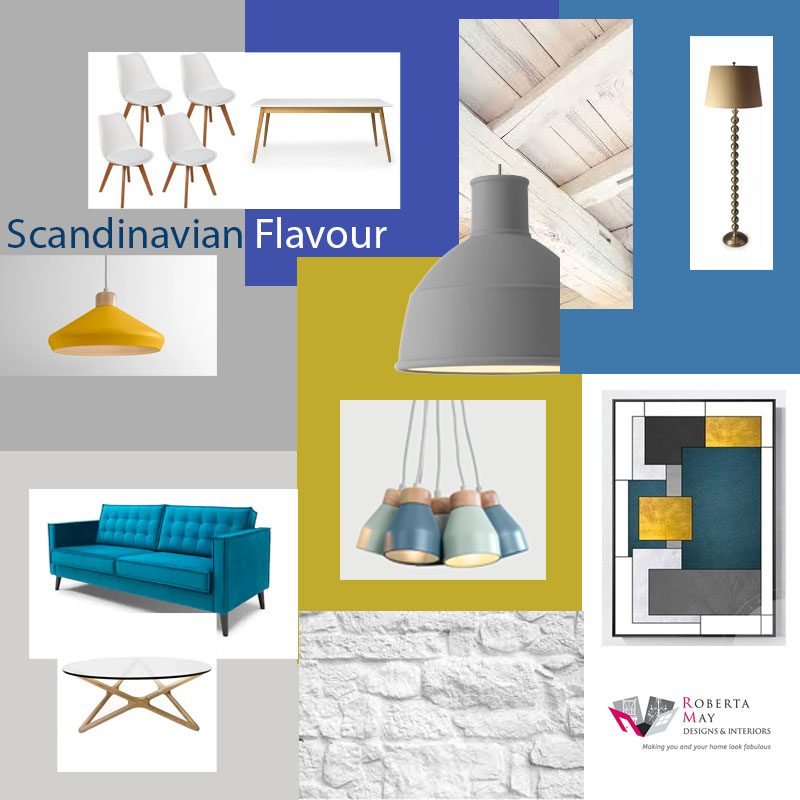What Exactly Is A Moodboard And Why Should You Create One?
Setting your objectives

Trying to describe or capture something as abstract as a mood or feeling, can feel like an exercise in frustration. How do you evoke the right mood when all you have is words? For this reason, professional designers turn to mood boards — a collection of images, textures, typography, colour palettes and description words. Also known as an inspiration board or design board. Mood boards can help you gather ideas and inspiration for a project as well as help you define your end vision.
Visual Representation: Mood boards bring abstract concepts to life through visuals. They combine images, textures, colours, patterns, and other design elements that convey the intended style, mood, and atmosphere of a project.
Clarity and Focus: By incorporating different elements into a single composition, mood boards offer clarity and focus. They prevent uncertainty, helping designers and clients get on the same page about the project’s vision and objectives.
Decision-Making: Mood boards enable decision-making by allowing you to see how various elements work together. Design choices become more obvious when placed side by side, making it easier to determine what works well together and what doesn’t.
Communication: Words alone might not successfully convey a design concept. Mood boards provide a common language that overcomes verbal descriptions, making it easier to clarify to clients and everyone involved.
Inspiration and Exploration: Mood boards are great for brainstorming and exploring new ideas. They encourage creativity by allowing you to experiment with different combinations of colours, textures, and styles without having to make a decision immediately.
Consistency: When working on difficult projects, maintaining consistency across various design elements can be challenging. Mood boards serve as a reference point, making sure that all decisions follow the visual theme.
Feedback and Adjustments: Presenting a mood board early in the design process allows for feedback and adjustments. This prevents misunderstandings and the need for major changes later on, saving on time and resources.
Client Collaboration: For professionals working with clients, mood boards involve clients in the design process. They encourage clients to provide input and feel more engaged to the project’s development.
Project Documentation: Mood boards serve as a future reference of a project’s development. They explain the journey from initial ideas to final design choices.
Problem Solving: Mood boards can help identify potential design issues before they become problematic. Elements that clash or don’t connect can be spotted early on and addressed.
In summary, mood boards are like blueprints for creativity, allowing you to coordinate, explore, and refine your ideas before executing them. They streamline the decision-making process, improve communication, and result in more cohesive and visually pleasing outcomes.
Moodboards are a vital component of the interior design process, acting as a visual guide that enables designers to effectively communicate their vision, inspire clients, and streamline decision-making. The importance of mood boards in interior design can be ascribed to these fundamental elements:
Establishing a cohesive design vision.
One of the primary functions of a mood board is to present a unified design concept that aligns with a person’s preferences and expectations. By carefully curating a collection of images, textures, and colours, mood boards facilitate a clear understanding of the project’s direction, ensuring that the designer and other party are on the same page from the outset.
Decision-making
Mood boards play an integral role in the decision-making process by visually representing how various design elements complement one another. This holistic perspective enables you to make more informed choices regarding materials, colours, and textures, ultimately resulting in a harmonious and aesthetically pleasing space.
Communicating ideas
A well-constructed mood board is a formidable influence as a communication tool in design. Providing a comprehensive snapshot of your design vision will help to keep you on the road to your design. This is where the true value of a mood board comes to the fore, in its ability to vividly convey your design ideas and concepts in a manner that’s accessible, tangible and visually compelling.
Most mood boards often include:
- space alignment
- images from magazines
- sketches and illustrations
- paint color swatches
- fabrics and texture that suit the overall design.
- flooring samples
- lighting
You can create all of the above with digital programs.